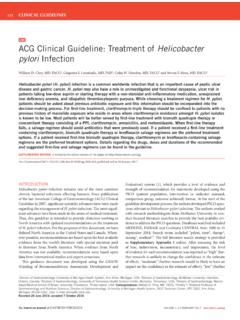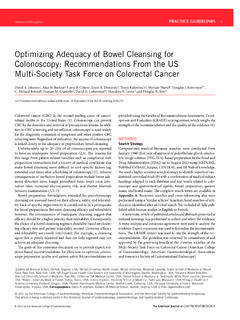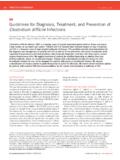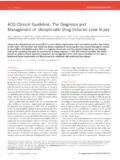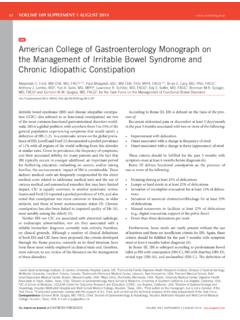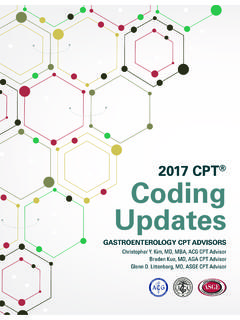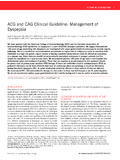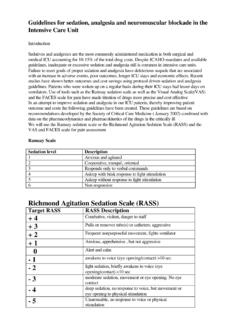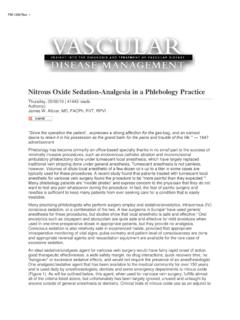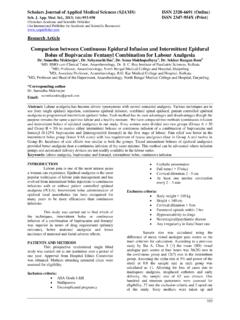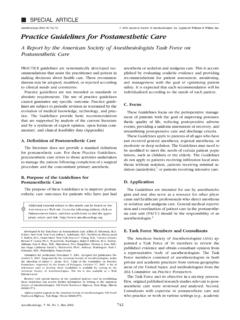Transcription of Opioid-Induced Constipation: Challenges and …
1 2011 by the American College of Gastroenterology The American Journal of GASTROENTEROLOGY nature publishing group835 REVIEW CLINICAL AND SYSTEMATIC REVIEWS INTRODUCTION Th ere has been an alarming increase in the prescription and chronic use of opiates and opioids for chronic non-cancer pain in the past 15 years. Th e objectives of this narrative review are to summarize essential aspects of the epidemiology of opiate- induced constipation (OIC), summarize the eff ects of opiates on gastrointestinal functions that lead to constipation , evaluate pharmacological approaches to treat or prevent OIC ( Table 1 ), and describe patient response outcome instruments being deve-loped for use in drug trials to relieve OIC.
2 Th e main considera-tion was to provide practical information for clinicians managing OIC, and to introduce them to novel agents that are in develop-ment for this condition. A search was conducted using the PUBMED electronic data-base (1966 to November 2010) using the following keywords and diff erent combinations: epidemiology, prevalence, opioids, opiates, opioid receptors, morphine, motility, secretion, gut, bowel, bowel dysfunction, constipation , and in addition hand searching the references of the individual papers retrieved.
3 For NKTR-118 and TD-1211, a search was conducted in the public domain (using Google) for those specifi c drugs; data presented in abstracts at national meetings were appraised. opioid USE AND EPIDEMIOLOGY OF CHRONIC OIC Th e prevalence of chronic pain in the adult population ranges from 2 to 40 % , with a median point prevalence of 15 % ( 1 3 ). Chronic use of opioids for months or years for non-cancer pain is com-monly encountered in clinical practice. opioid analgesia treat-ment for severe pain is predictably effi cacious and improves level of function ( 4,5 ).
4 Prescription opiate use has increased sharply in many parts of the United States in the last decade ( 6 8 ), as it is a clinical imperative to inquire about and manage pain reported by patients. Increase in therapeutic opioid use in the United States is well documented ( 9 ), based on data from US Drug Enforce-ment Administration (( 10 ) Figure 1 ). Th e American Society of the Interventional Pain Physicians has issued guidelines for appropriate use of opioids ( 11 ).
5 However, there is a rising tide of deaths from the fl ood of opioid use ( 12 ), with ~ 3 % of adults in the United States currently receiving long-term opioid therapy for chronic non-cancer pain ( 13 ). With the increased use of opioids, there are more patients pre-senting with OIC or opiate bowel dysfunction (OBD) ( 14,15 ). constipation may be debilitating among those who require chronic analgesia ( 16 ); OIC or OBD aff ected an average of 41 % patients taking an oral opioid for up to 8 weeks in a meta-analysis of 11 placebo-controlled, randomized studies in non-malignant pain ( 14 ).
6 Patients may discontinue treatment due to constipation , despite their established need for long-term pain relief. In a survey of patients taking opioid therapy for pain of non-cancer origin, who required laxative therapy, only 46 % of opi-oid-treated patients reported achieving the desired treatment results > 50 % of the time, in contrast to the reported satisfaction in 84 % of control subjects ( 17 ). Opioid-Induced constipation : Challenges and Therapeutic Opportunities Michael Camilleri , MD 1 There has been an alarming increase in the prescription of opiates and opioids for chronic non-cancer pain in the past 15 years.
7 It is estimated that opiate- induced constipation (OIC) is experienced by ~ 40 % of these patients, and that constipation and other gastrointestinal symptoms may dissuade patients from using the required analgesic dose to achieve effective pain relief. Opiates have several effects on gastrointestinal functions, and the inhibition of colonic transit and intestinal and colonic secretion results in constipation . Several different pharmacological approaches are being developed to prevent or treat OIC: prolonged release formulations that contain naloxone (a less specifi c opiate antagonist that is widely distributed) and a new class of peripherally restricted -opiate receptor antagonists, including methylnaltrexone, alvimopan, tapentadol, NKTR-118, and TD-1211.
8 Novel patient response outcomes have been developed to facilitate demonstration of effi cacy and safety of drugs in development for OIC. Am J Gastroenterol 2011; 106:835 842; doi: ; published online 22 February 2011 1 Clinical Enteric Neuroscience Translational and Epidemiological Research, Mayo Clinic , Rochester , Minnesota , USA . Correspondence: Michael Camilleri, MD , Clinical Enteric Neuroscience Translational and Epidemiological Research, Mayo Clinic , Charlton 8-110, 200 First St SW, Rochester , Minnesota 55905 , USA.
9 E-mail: Received 22 December 2010; accepted 17 January 2011 CMEThe American Journal of GASTROENTEROLOGY VOLUME 106 | MAY 2011 Camilleri Among 100 ambulatory patients with moderate-to-severe chronic non-cancer pain, who returned a bowel disease survey and had taken opioids for a median of 1 year at a median daily dose of mg morphine-equivalent units, prevalence of constipation was % and chronic abdominal pain % . Prevalence of constipa-tion increased with duration of treatment.
10 Health-related quality of life was low in patients with chronic abdominal pain ( 18 ). In the United States and European survey of 322 patients taking daily oral opioids and laxatives, 45 % of patients reported < 3 bowel movements per week, 81 % reported constipation , and 58 % strain-ing, symptoms were most oft en reported as severe, had at least a moderate negative impact on overall quality of life and activities of daily living, and a third of patients had missed, decreased.
